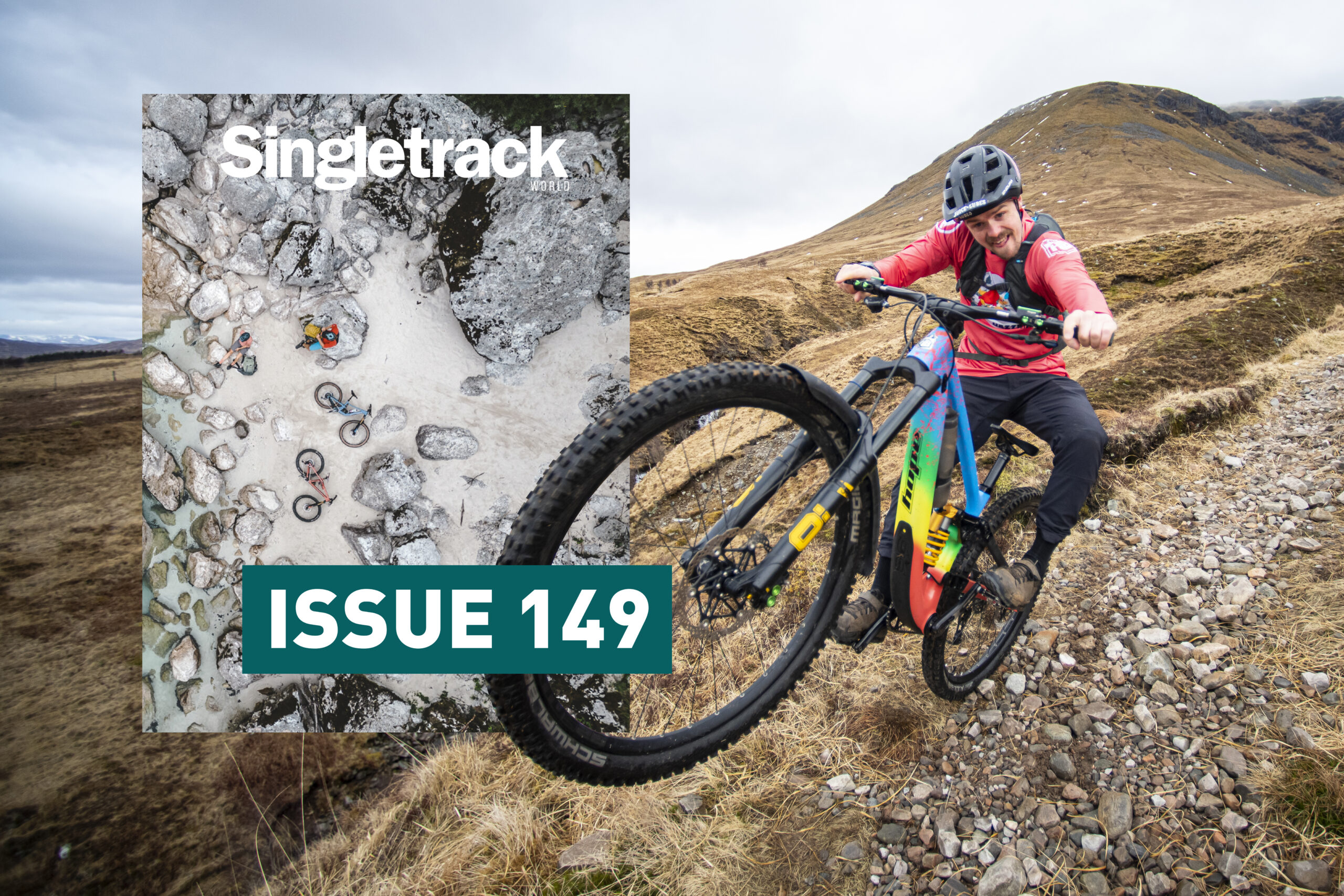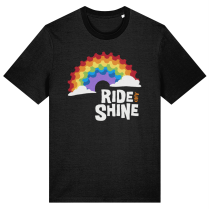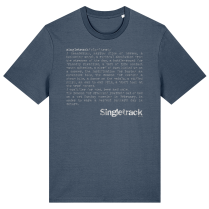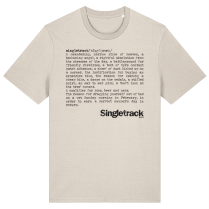Ever seen that big pointy lump of a hill on the way to Fort William and wondered how it rides? Pete Scullion goes to find out.
Words & Photography Pete Scullion


Anyone who has headed north after sampling the chips at the Real Food Cafe in Tyndrum, for adventures in the Highlands proper, or for the Fort William World Cup, will know Beinn Dorain, even if not by name. This massive pyramidal Munro stands tall over Bridge of Orchy at a cool 1,076m (3,530ft), with its most impressive face greeting you as you start the long, steady descent into Glen Orchy. Along its western flank runs the West Highland Line and the West Highland Way, with river gullies carved straight down its front.
The jury is out when it comes to the mountain’s name and its meaning. Beinn Dorain and Beinn Dobhrain are cited, their English meanings being the Hill of the Small Stream and Hill of the Otter respectively. The former seems very much evident because of the endless running water on the ascent to the bealach that separates Beinn Dorain from its neighbour, Beinn an Dothaidh. It is possible to bag both in one outing, but the path up Beinn an Dothaidh is pretty dull at the top and unrideable at the bottom.
Latest Singletrack Merch
Buying and wearing our sustainable merch is another great way to support Singletrack
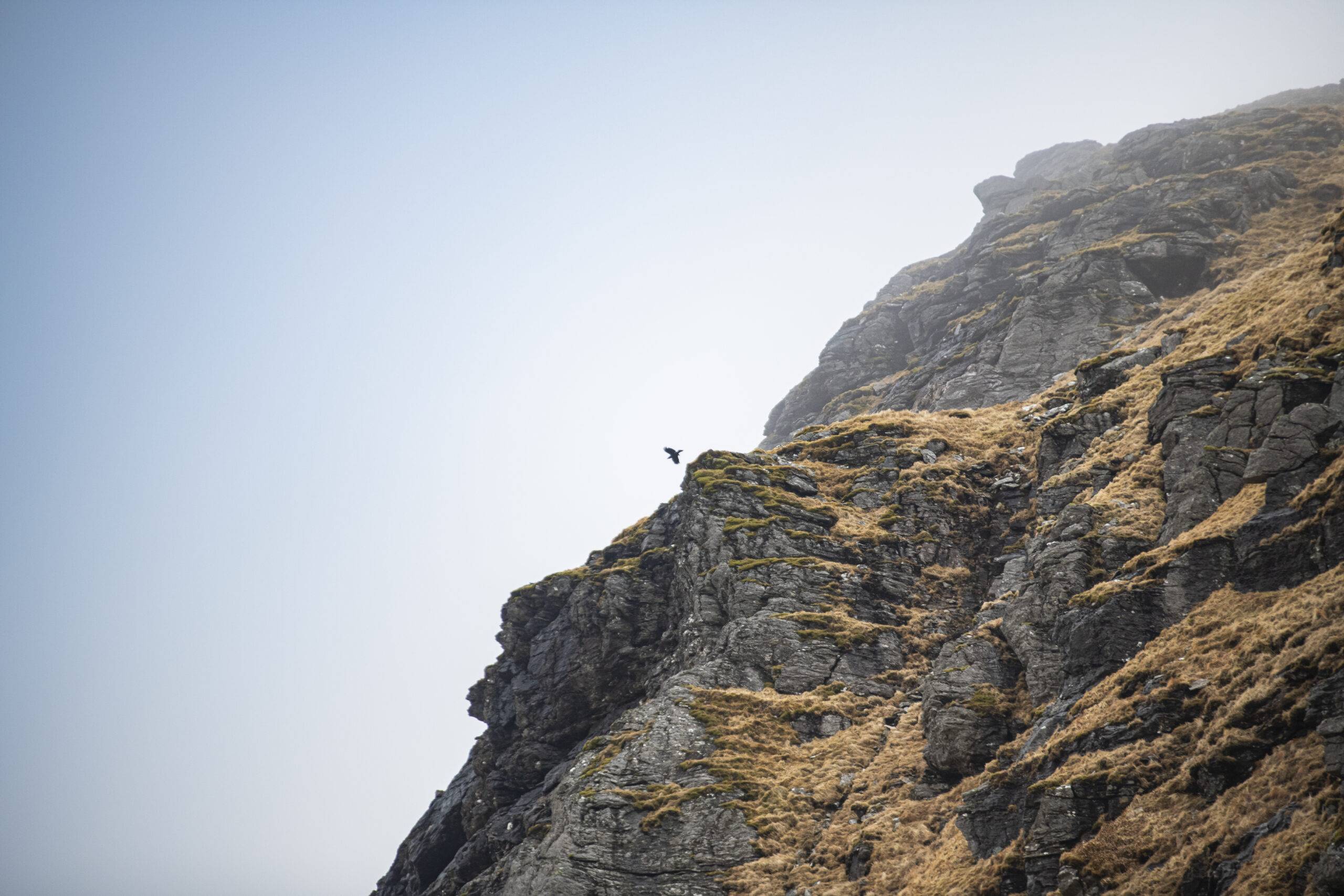
Few making the long trek north will have considered this as a viable option for a ride. but it’s certainly one of the most varied and longest descents on offer. There’s also a high chance that you’ll spot the pair of white-tailed eagles that nest somewhere near Loch Tulla when they use the thermals that rise as the wind hits one of the four Munros making up this run of hills. From Beinn Dorain in the south to Beinn a’Chreachain in the north, I have seen this pair of monumental birds on every Munro bagging outing in the area.
Scottish Gaelic poet Donnchadh Bàn Mac an t-Saoir (anglicised as Duncan Ban MacIntyre), lived in the glen that joins Glen Orchy to Glen Lyon. His piece ‘Moladh Beinn Dóbhrain’ (‘In Praise of Ben Dorain’), was his most popular, but was an oral poem as MacIntyre himself was illiterate. It is considered one of the masterpieces of Gaelic poetry, and would originally been told with the accompaniment of pipes. An extract reads:
How does it begin?
With the piper’s drone
with the coarse fabric of the land
in greens and greys and purples,
the lines of hoof and song
that cross it.
Landscape as pibroch:
the drone never silent,
never still,
then fingered notes
lift high above the moor:
Weather window seeks willing humans
A rare window of no rain, something that seems to have been non-existent in these parts since October, or so it would seem, meant a scramble to find suitable humans to join in. There’s also the small issue of snow. Less than a week ago, this hill, and many of similar height, would have been impassable to bikes. A week of strong wind and heavy rain means that the hill has been mostly swept clear of the white stuff in all but the most shaded of corries and on the deeper drifts on the upper reaches of the mountain.
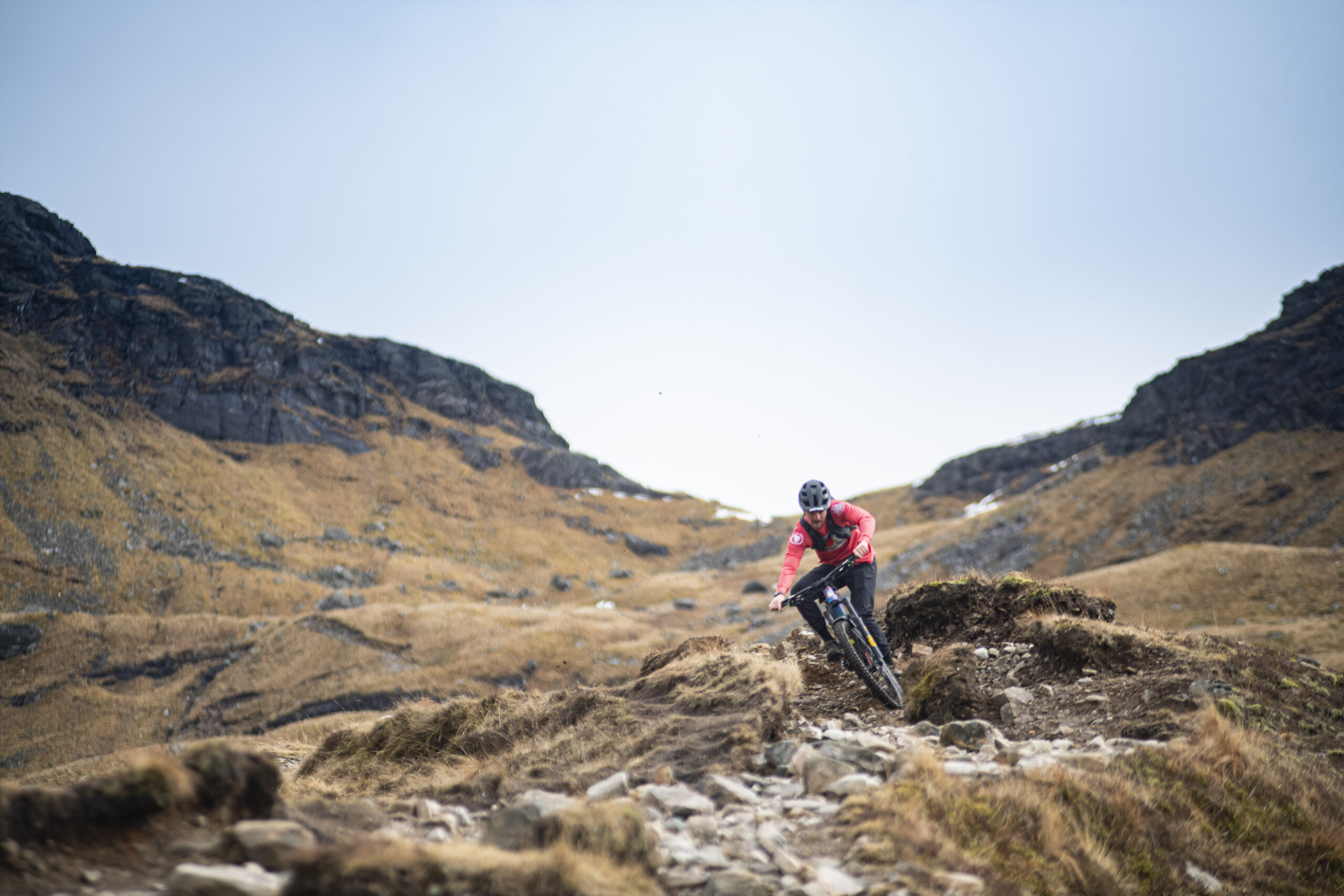
The forecast in fact shows sunshine early doors, and I’m to meet the Top Chief, Joe Barnes himself, at the Bridge of Orchy train station for this familiar mission. There is more parking below the A82 but as we’re out of season and arriving fairly early, the train station car park is the closest option. Underpasses are something those in cities are perfectly used to, but the Bridge of Orchy train station sports one too. Anyone wanting to join the West Highland Way, or leave it, can do so here by passing under the railway line.
Our route takes us across the West Highland Way, and to the north of the radio mast that is a very out of place, man-made object on what otherwise is a massive expanse of regenerating forest and blanket bog on the lower shoulder of the hill. We’re aiming for the bealach above Coire an Dothaidh at 744m, so we’ve half a vertical kilometre to climb before we’re on the hill proper.
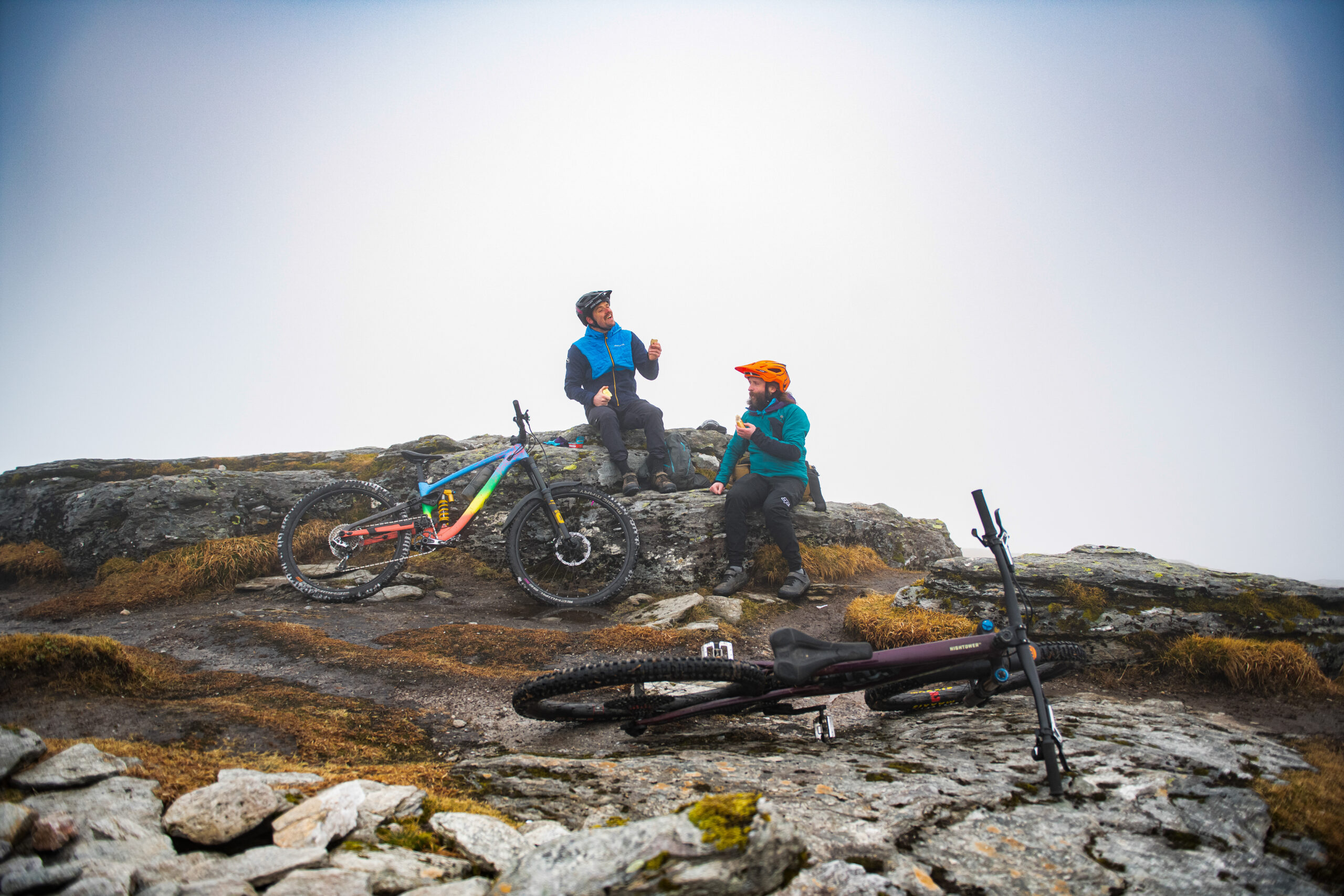
We’ll be following the Allt Coire an Dothaidh all the way up into the corrie above. The path starts very well next to the mountain rescue donation box but soon spreads out, leaving the ground hard going, especially when wet. In the dry though, this is a delightful technical climbing challenge that will see you gaining height fast. The only places where your upward trajectory will be halted is through the steep-sided burn crossings and where the sides of the path have collapsed. Beyond that, every now and again, you get some stalkers path underfoot and the going is easy. We’re soon complaining about the heat, as we’d both layered up for what we assumed would be a chilly day out. We’d soon be disabused of that notion.
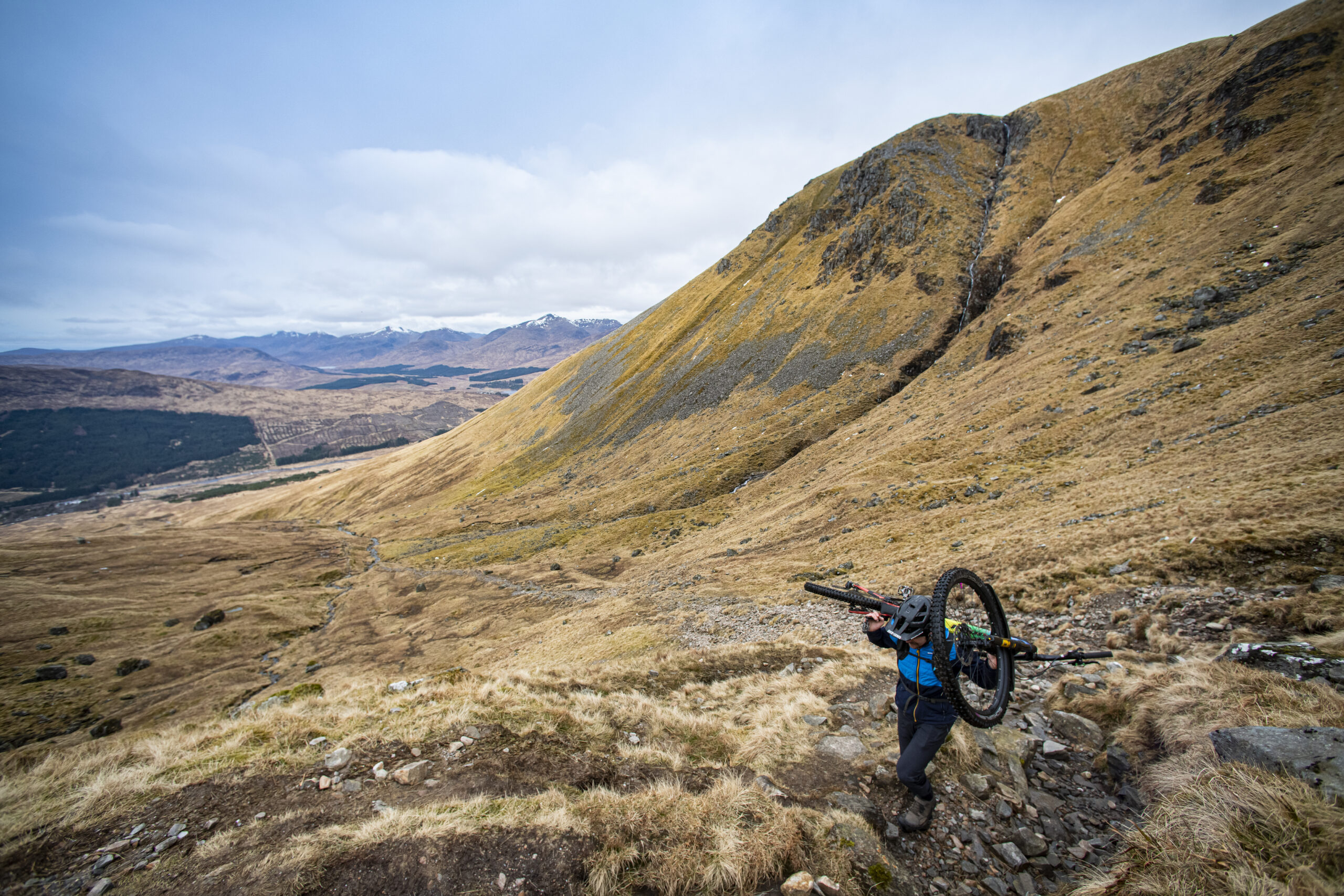
After a winter that wasn’t kind to my mass or my fitness, I’m soon reminded of the Terminator-like pace of Mr Joe Barnes. There’s probably faster people up a hill, but on this kind of ground the pace from the rear-wheel steering lunatic is relentless. My tactic is to engage him in some chat so he has to stay nearby, but every now and again the subject runs its course and I’m left trying to do my best to keep up.

Up, up and up
As we approach the first of the corrie walls, crossing the Allt Coire an Dothaidh, we’re shown the full height of what we’ve climbed, the sheer corrie walls, dark and glistening with the omnipresent water, contrasting with the bright green of the lower slopes. We take the opportunity to remove some layers as it’s getting pretty sticky now the incline has increased somewhat. Above the burn, the path is badly eroded – so much so that there isn’t one really. This section, and the climb out of the high corrie, is the toughest part of the ride in both directions. Essentially, it’s large scree, made of multiple different types of rock, but with some glistening mica that looks unreal in direct sunlight.
Joe’s face as I make the corrie indicates that there was a good reason we were so warm on the ascent. We’d been protected from an easterly wind rattling up Loch Lyon by our westerly approach. It’s mad to think that Loch Lyon is a stone’s throw away here, but to drive there would be a 50-mile drive that would take almost two hours.
That’s not where we’re headed though… We layer up as the icy easterly continues to batter away at the eastern face of the bealach. It’s here that the first big patches of snow are visible, and the waterfalls running into Loch Lyon are frozen solid in places.
The main difference here is a distinct shallowing of the gradient and a return to bedrock. It would be easy to be lulled into a false sense of security about proximity to the summit at this point. While the summit may only be three hundred odd metres higher than the bealach, it’s a good two and a half kilometres distant. It’s this that makes Beinn Dorain such a good ride. So many Munros are steep up and down, offering little but a white-knuckle ride after several hours of shoving up a 1:1 face. There’s plenty of shoving or hikeabike here, take your pick of method, but there’s also a decent amount that’s rideable and a fair old amount of ride time on the way down.
Eagles turned up to eleven
As we’re about to turn our minds to the summit approach, two silhouettes rake through the lowering cloud. There’s only one thing they could be. Nothing else in the UK has the wing area and the mastery of the skies like a white-tailed eagle or ‘sea eagle’. These two massive raptors are what keep me coming back to these hills. Yes, the riding is great, but any eagle sighting is one for the books, and sea eagles are eagles with all the dials turned up to eleven. You won’t see a bigger eagle in Europe – only Stellar’s sea eagles, Philipines eagles and Harpy eagles are larger.
Having likely misidentified plenty of birds on the climb deliberately to wind me up, Joe’s attention on the sky breaks quicker than mine. I’m hoping the eagle makes another pass, but I look over my shoulder to see Joe has made good the rocky pitch above the bealach so I’ve some ground to make up.
Once over a series of large rock steps the ground levels out once more. Lochans of various sizes litter this small plateau, but most are frozen solid. As we swing back south, we’re afforded massive views across Glen Orchy towards Loch Dochard and Glen Kinglass beyond. The Munros of Glen Etive skim the clouds here and aren’t quite rid of their winter coats.

With this being the only flat ground around, the going is slow. The glistening silt that’s been washed off the higher slopes is like slippery porridge, making every pedal stroke less rewarding than it might normally be. Here we find that Beinn Dorain hasn’t quite lost its winter coat either. As we pass through the 850m mark, larger patches of snow cover the path ahead and we’re left to follow footprints, as long as they don’t go anywhere daft.
From memory, the path splits again and becomes quite rough underfoot, and it’s not until we’re going downhill again that I’m pretty sure we’re below the path we should be on. As the cloud keeps dropping, we retrace our steps and get back on the better path that stays out of the boulders that lie west of the summit ridge. This makes a nice change from shoving the bikes through snow as quite a lot of the going here is rideable.
Out of the mist comes Carn Sasunnaich. This isn’t some flesh-eating beast of Gaelic lore, more a hint at the esteem in which the Scots held English navigation. Carn Sasunnaich means ‘The Englishman’s Cairn’ and sits a short hop from the true summit.
This is my favourite part of the hill. Not the Englishman’s Cairn, but the part in between and the true summit. On a clear day you can see all the way up Glen Lyon and all the way down Glen Orchy. It’s a window with views that are hard to beat. Only the view south from the summit is better. We’re left to fuel up for the long descent with no view at all though…
Forget the ascent
Don’t kid yourself into thinking that you’re going to remember anything you pushed or rode up on the outlap. There’s simply too much hill for that. I’d be left tailing Joe from the off, but my god it doesn’t matter when the going is this good. Moments of madness come and go, breath sharp through your teeth as you commit to the questionable line you’ve chosen, then spin your way along to the next one as your heart and bottom return to normal service.
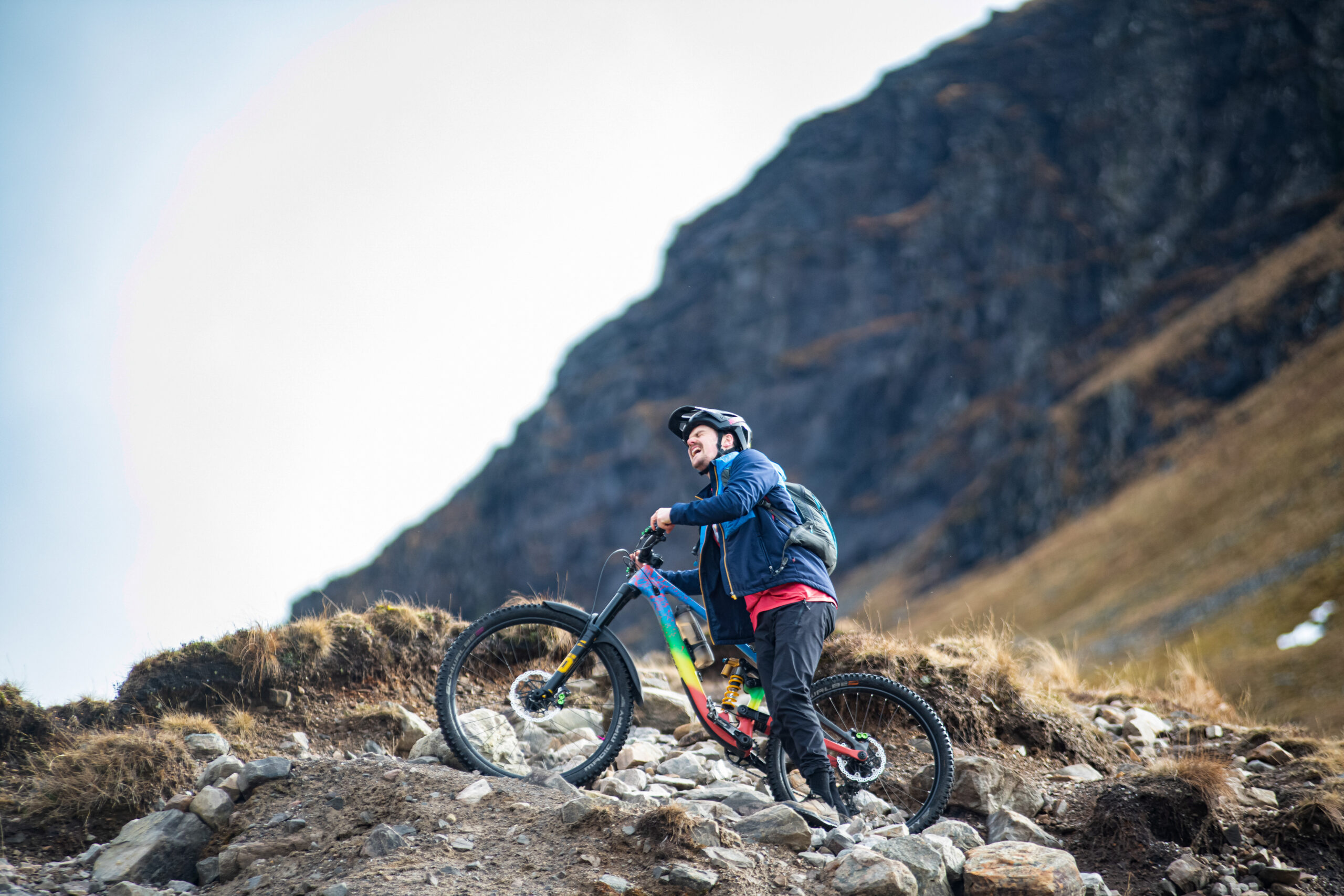
Moments of flat-out speed are interspersed with picking your way down things at a crawl before you’re afforded a breather, pop the saddle up and get ready to go again. It’s not long before we’re back at the lochans having ‘ridden’ the snow patches higher up. Regrouping before the slabs again, we look back and wonder at how much height we’ve just lost and how long it took to get there. This is the running theme of this descent.
You will spend so much time making sure that your wheels are going in the right direction, sometimes in a good way, sometimes bad, that you’ll not notice how far you’ve gone until you take stock of the fact that you’re a third of the way off the hill. Joe is loving the ‘ride what’s in front of you’ style of trail and is easily putting wind between us at any opportunity. On the rare occasion I dare to go first, at times I’m hard on the anchors, he’s in the air, so the order switches fast.
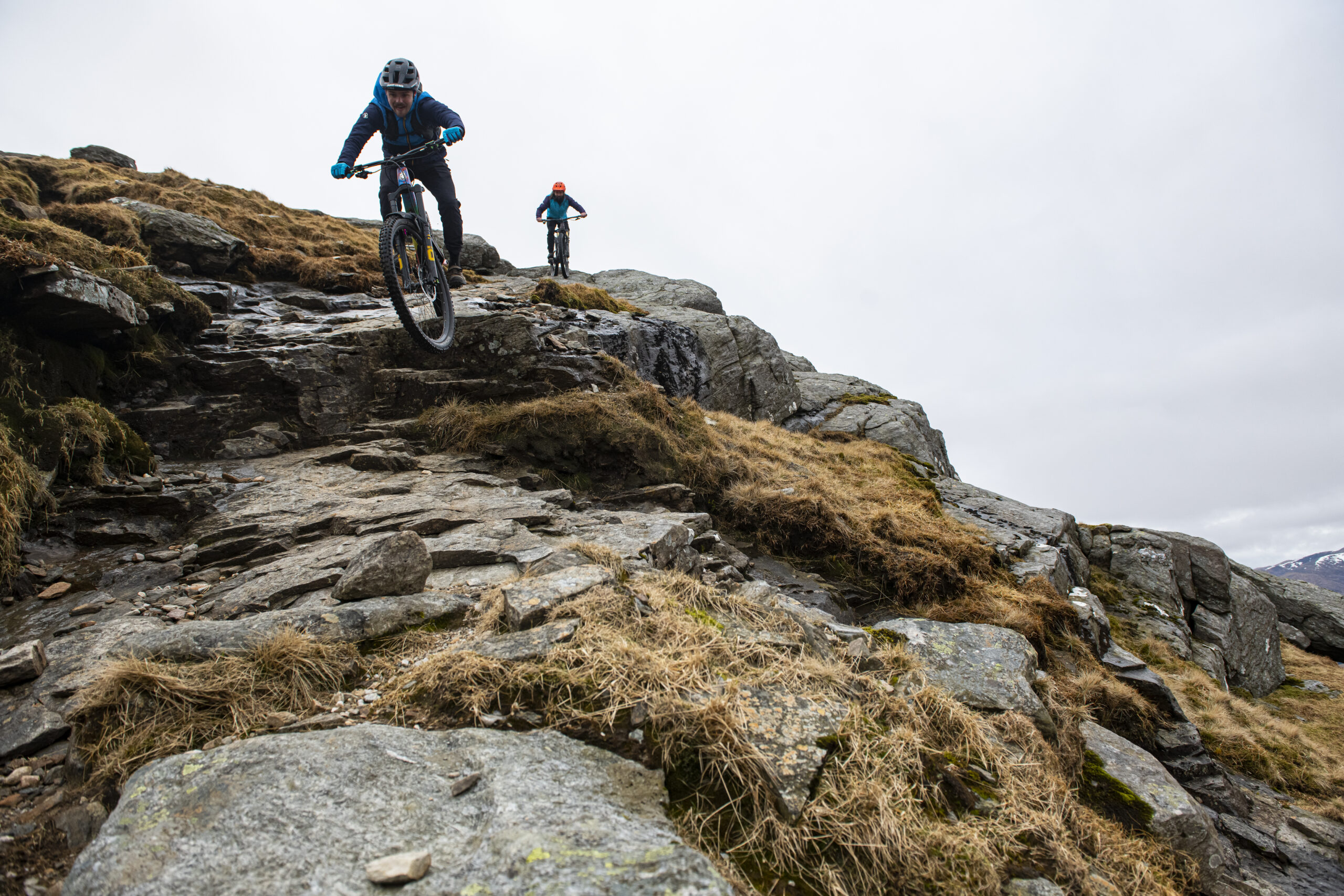
The slabs above the bealach are imposing both to look at and ride, and we both take the wrong line. A bit of pedalling about and we’re sort of on the right track again. Wheel-catcher rocks and jagged slab edges give me the fear and I’m happy to be beyond them. A quick glance to the skies to see if the eagles have returned before the mega tech of the scree below awaits. Joe makes this section look like a blue trail. I make it look like I haven’t ridden a bike before.
Most lines are wrong
With the boulder field behind us, we’re back to the good bits. Again, line choice is critical but most of them are wrong – you just have to be good at making do with what your bike is pointing at. Lower down the hill, the speed increases and you’ll be feeling it in the arms as your wheels ping off countless rocks, spitting you off line before those wonderful moments of panic that make you feel so alive.
Clattering back onto the West Highland Way we can’t make out the summit we came from an hour or so ago, thanks to the thick blanket of cloud rolling off the sea. The lure of the Real Food Cafe is strong, even if it’s the wrong direction for Joe.
If you’re lucky enough to get this hill in the dry and with a clear view from the top, you’ll forget the boulders in the high corrie and the occasional bit where you might want to launch your bike into a bog. If you catch some eagles and get the views, the harder bits won’t be the bits you remember. If big hills and mad boulders aren’t your thing, there are other options in this part of the world. If you are, then hold on tight once you get to 1,076m.
